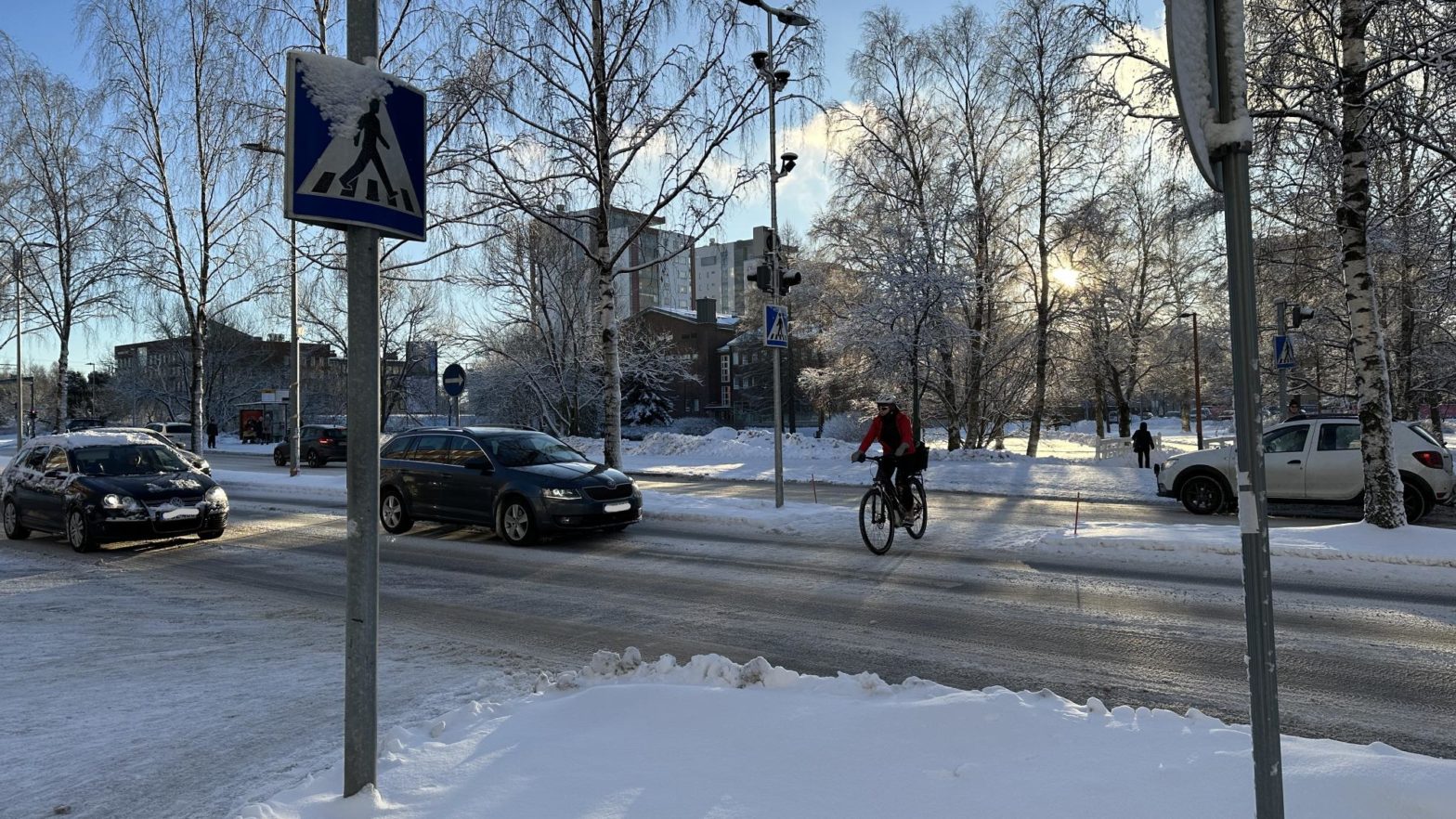
Photo: Q-Free-image-1
Tackling traffic management through European standards
26 April 2017

The European Commission’s new Urban ITS Working Group will provide unifying standards and solutions for a series of mobility-related safety applications. Here its Convener, Q-Free’s Chief Technologist, Knut Evensen, describes the work to be done
Motorways produce the most disastrous accidents due to high speeds and often multiple vehicles involved, but by volume and societal costs, the more mundane accidents in urban areas take priority to fix.
Incoming ITS technology has the potential to reduce accidents but is also making the traffic picture more complex and puts more demand on users. This complexity may increase accidents if nothing is done to meet these challenges.
Advanced assistance
Adding ever more capable advanced driver assistance systems (ADAS) in every new car model is the gradual way of introducing fully automated driving. The idea is to off-load the routine tasks from the driver and let the car take over to prevent accidents in certain situations. Including the new functions of ADAS is an accelerating process that car manufacturers perceive as a competitive area where differentiation is key.
However, the vulnerability in ADAS is the driver. Once accustomed to the advanced features, drivers will solely rely on them and not be able to manage unpredictable situations such as software upgrades, unfamiliar systems in rental cars, or travel to a city where the car brand does not have an agreement with the local service supplier. In all of these if an accident occurs the drivers will be placed at fault. This just places blame and liability but doesn’t address the reality that introducing partial automation without proper standards, HMI rules of behaviour (homologation), and the proper training of drivers are big risk factors that will cause accidents.
Self-driving challenges
Another looming risk is the testing and gradual introduction of fully automated vehicles. The vehicles themselves can be made reasonably safe, but the interaction with city traffic and other road users will be challenging. For instance, when the city decides to only allow SAE (Society of Automotive Engineers) level 4 and 5 on a particular lane, on a particular road, and within certain time limitations avoiding rush hours, how will the automated vehicle know? Or when the city council declares that a certain inner zone is only allowed with zero emissions, and hybrids have to change over to electrical when entering the zone, how will the car know?
Reading unfamiliar and unpredictable situations is also an issue. Traffic police are called out to manage complex traffic situations. Drivers intuitively understand the legal status of the officer and what to do from the directional hand signals. Automated cars however, will not be able to ‘process’ who the officer is and what their hand signals mean. As one of my Australian friends said: “How will the car understand that this is a police officer to be trusted, and not the village idiot waving his arms?”
Finally, the full dystopia from a safety perspective: If the SAE level 5 car, without a steering wheel or pedals, receives instructions from something looking like a road authority: ‘Now the recommended speed is 150 km/h, and that left turn ahead is really not there, the road is straight. Just drive nicely off that cliff’.
All of these questions are realistic and are much more important than the media’s misplaced focus over moral dilemmas such as determining which life is more valuable in an accident situation.
Standard is the solution
Luckily, we do have answers to these challenges. The European Commission (EC) has studied urban mobility, safety and ITS for a number of years, and automated vehicles are certainly a big part of this puzzle.
These driverless vehicles will rely upon communicating with each other and their surrounding infrastructure. What is needed are tightly written rules which are somehow communicable, understandable, and trustable by a machine. This need is being addressed by a number of technical standardisation groups, and more importantly, a new European Commission mandated Urban ITS Working Group–CEN 278 Working Group 17–has been established.
Preparation for the new Working Group started over a year ago, and concluded that there needs to be an EC Mandate for the development of a whole series of new standards impacting a number of challenges including safety.
Tackling traffic management
Within the Traffic Management arena, an already complex picture is being further complicated by the beginning of vehicle ‘autonomy’.
The issues, from the infrastructure side, are not necessarily all technological. In many countries, city and local authorities have a great deal of leeway to set traffic regulations across their geographic areas of jurisdiction. Situations such as major events, regulation of air quality and local ordinances will create situations that will unpredictably alter routes, change temporary access, and adjust speed restrictions.
The communication method of these conditions vary. Traditionally, static, and even handwritten, roadside signage has been used, along with traffic bulletins on local radio stations and advertisements in local press. In some locations, variable message signs may be used but often the messages are so abbreviated that they are of little use to anyone other than those already familiar with the local area. Some use of radio broadcast (RDS-TMC/T-PEG) and in-vehicle navigation systems do occur but the reality is that the information currently being disseminated tends to be for human consumption.
From a standards perspective, it is a situation that might best be described as messy. From a safety perspective, it is certainly compromised.
Trusted cloud
One of the early tasks of the Working Group is to propose and coordinate a set of standards for traffic rules that we have called Electronic Regulations.
The idea is that a cloud service will hold all traffic and mobility management rules relevant for a certain area. Each of these regulations will be marked with time and geographic validity, in addition to certain other meta-data. Most importantly, it will have a strong cryptographic certificate proving the appropriate authorisation. Several authorities such as police, the local traffic management centre, mayor’s office, national transport authorities, and others, may enter different regulations with their certificate and time and place validity. This is quite similar in operation to the European ITS Directive where dynamic traffic data is made available from national access points. Distribution to different kinds of users, including automated vehicles, is an easy task once these standards are in place.
The mobility-related safety implications of all of this are far-reaching. One of the intended goals of the Urban ITS Working Group’s efforts is that a single personalised smartphone app can be used to manage mobility of all kinds, including cycling and walking. This single app will be capable of being used in any city or geographic location and users will be able to interface with it in their most preferred way. Users will be given information on safe places and means to travel and the app will be highly customizable–for example, pedestrian users with prams and those with other mobility considerations will be readily catered to.
The teams for the first round of Working Group-related EC funded projects are starting now. Work will begin in earnest after the Group’s next formal meeting in May 2017, and we are looking for cities interested in piloting this concept in the near future.
Brought to you by Q-Free








